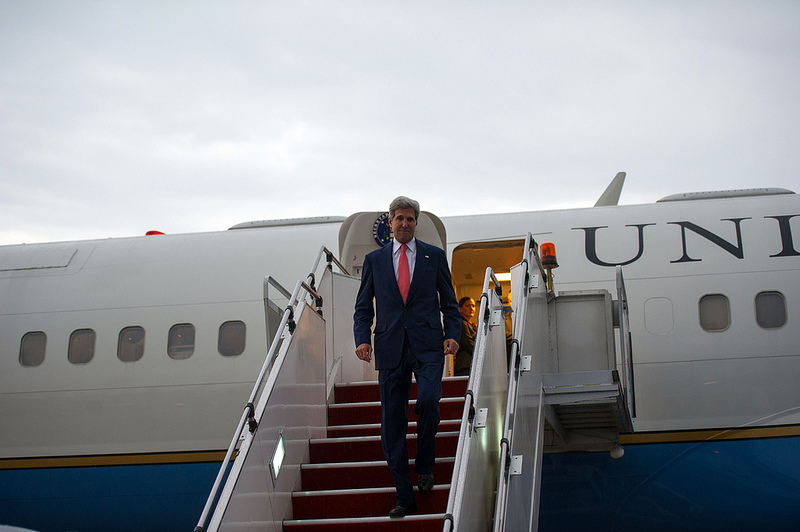 With a new government taking charge, the proposal to build a fourth Air Warfare Destroyer (AWD) has re-emerged. Unsurprisingly, the loudest voices are those with a vested interest, including shipbuilders and shipyard unions. So far, the public debate has focused on avoiding a shipbuilding ‘valley of death’ when the last AWD is delivered in 2019—without any serious discussion of whether a fourth AWD is a worthwhile investment. Much like the often-whimsical famine follies build around the time of the Irish Potato Famine, the goal seems to be to keep people in work irrespective of the intrinsic merit of the project.
With a new government taking charge, the proposal to build a fourth Air Warfare Destroyer (AWD) has re-emerged. Unsurprisingly, the loudest voices are those with a vested interest, including shipbuilders and shipyard unions. So far, the public debate has focused on avoiding a shipbuilding ‘valley of death’ when the last AWD is delivered in 2019—without any serious discussion of whether a fourth AWD is a worthwhile investment. Much like the often-whimsical famine follies build around the time of the Irish Potato Famine, the goal seems to be to keep people in work irrespective of the intrinsic merit of the project.
When complete, the three Hobart-class AWDs currently in build will reinstate the broad area air defence capability lost when the last of the Navy’s DDG destroyers was decommissioned in 2001. At the risk of undermining the supposed analytic rigour of Defence’s force planning processes, the most likely reason we are building three AWDs is that we once had three DDGs. So it’s fair to ask what a fourth vessel would give us.
Hugh White has long argued that the utility of surface combatant has been eclipsed by anti-shipping missile technology, and Andrew Davies has questioned the protection of shipping argument often used to justify the AWD program. I have sympathy with both views, but let’s stipulate for argument’s sake that AWD are useful things.
All other things being equal, more capability is better than less. A fourth AWD would give us 33% more capability than a fleet of three. Given an effective and well-managed sustainment arrangement (which admittedly can’t be taken for granted given recent experience with other fleets), it would effectively assure the continuous availability of at least 2 ships and would make 3 ships available most of the time. While this would be a good thing, it would come at a cost.
Every dollar spent on a fourth AWD can’t be spent on other capability options. For example, why not expand the planned fleet of LHD amphibious vessels from two to three rather than increase the AWD fleet from three to four? A 50% increase to the LHD fleet might well be better than a 33% increase to the AWD fleet. As things stand, there’ll be extended periods when only one amphibious ship is available for tasking. But with the lion’s share of the amphibious ships being built in Spain rather than Australia, don’t hold your breath waiting for someone to make the case.
My point isn’t that we should build a third LHD. Rather, it’s an example of how a multi-billion dollar investment such as an extra AWD should be carefully considered in terms of the opportunity cost it imposes on potentially more cost-effective alternatives.
The ambitions surrounding a fourth AWD go beyond boosting the capacity of the currently planned fleet. It’s been put to me on several occasions that a fourth AWD provides a perfect opportunity for Australia to develop a Ballistic Missile Defence (BMD) capability by fitting the final vessel with the Aegis BMD system employing the SM-3 missile. While a single such vessel would inevitably be unavailable some of the time due to maintenance, it would allow Australia to ‘get into the game’ of BMD alongside the United States and Japan.
Given that the Aegis BMD system is only designed to intercept short to intermediate range ballistic missile threats, the argument for acquiring a naval BMD capability would most likely be based on protecting deployed Australian troops. Let’s hope our troops remain close to the beach, so that the intermittently available BMD-equipped AWD can be brought into an intercept position relative to the threat. Or, better still, let’s acquire the ground-based Patriot PAC-3 system, so that our troops have a measure of protection wherever they go. Of course, if we were really serious about BMD for deployed troops we’d want the PAC-3 system in any case, to create the layered protection intrinsic to an effective system even if geography allowed an Aegis BMD component to come into play.
To be honest, I don’t think that there’s a high priority for either a sea-based or ground-based BMD capability to protect deployed troops. If such a capability was halfway worthy of consideration it would’ve been seriously developed years ago. Instead, we’ve made do with a short-range air defence system employing the shoulder-launched RBS 70, which has zero capability against ballistic missiles and only a very limited capability against fast moving aircraft. Moreover, the latest Defence Capability Plan contains no projects to either improve our ground-based air defences or establish ground-based missile defences.
Of course, a fourth AWD with Aegis BMD would be a valuable contribution to a US-led coalition mission in North Asia—it’s no accident that Japan is the only country apart from the United States to have the system. But do we really want to structure our forces for fighting in North Asia? For a long time our strategy has been to use assets acquired for our own defence as the basis of contributions to coalition missions. What message would we send by changing course and explicitly developing capabilities for the sole purpose of fighting in North Asia?
Those points are open to further debate, and they have pros and cons in terms of capability and military options the ADF can provide to government. But so far, none of these issues have so much as seen the light of day in the debate over a fourth AWD. Instead, we’re being asked to spend something in excess of $2 billion in order to avoid the ‘valley of death’ between the end of the AWD program in 2019 and the commencement of the new submarine and/or Anzac frigate replacement program. But we don’t have a start date for either program, and a life-of-type extension looks to be on the cards for at least the submarines. As for the Anzacs, which are presently undergoing a major anti-shipping missile defence upgrade, a life-of-type extension warrants close examination to determine the most cost-effective way ahead—even if it’s not the preferred option of industry or Navy. Until plans firm up on the future frigate and submarine fronts, we don’t even know if a fourth AWD would be sufficient to close the gap in shipyard work.
More importantly, even if we had strong confidence that a fourth vessel would enable continuity of production, there’s no indication that the scale of savings would justify the additional cost of a fourth vessel. A recent paper from ASC Ltd says only around 20% of the cost of a warship is due to shipyard labour, which means that only 20% of the cost of producing a vessel can be impacted by the ‘learning curve’ and skills maintenance that continuity of production promises to deliver. So, even if continuity generated a 30% reduction in labour costs (being very generous), the resulting saving would only be a 30% x 20% = 6% reduction in cost of the initial replacement frigates. And for this we’re asked to build an entire extra vessel and then crew and support it throughout its decades of service.
In the absence of either a clear strategic rationale or plausible business case, a fourth AWD would be a folly of strategic proportions.
Mark Thomson is senior analyst for defence economics at ASPI. Image courtesy of the Wikimedia Commons.
Correction: an earlier version of this post linked to the potato famine of the 1840s rather than the earlier famine during which the folly in the illustration was built. The error was by the contributor.








